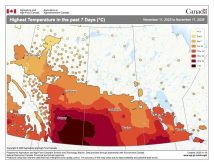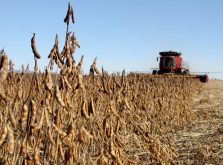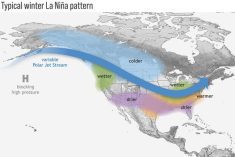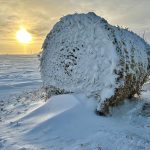After a fairly mild first half of November, things have turned cooler and a little more wintery. While it’s beginning to look like winter might have moved in for good, the long-range models seem to be really hanging their hats on El Niño bringing more above-average temperatures in December and right through the rest of winter.
The seasonal forecast models are strongly leaning towards very mild weather across much of Western Canada in December. Weather Underground contributor Eric Webb looked at the last 11 strong El Niño’s going back to 1895 and examined month-by-month temperature anomalies during El Niño winters. While his data only covers the United States, it is fairly easy to extrapolate it into southern and even Central Canada. I have included his graphic, and if you look at it you can see that Octobers and Novembers are usually slightly cooler than average during an El Niño year, with a dramatic shift to well-above-average temperatures in December. These mild temperatures then continue for the rest of the winter with a slow ebb in the strength of the mild weather as the winter wears on.
Read Also
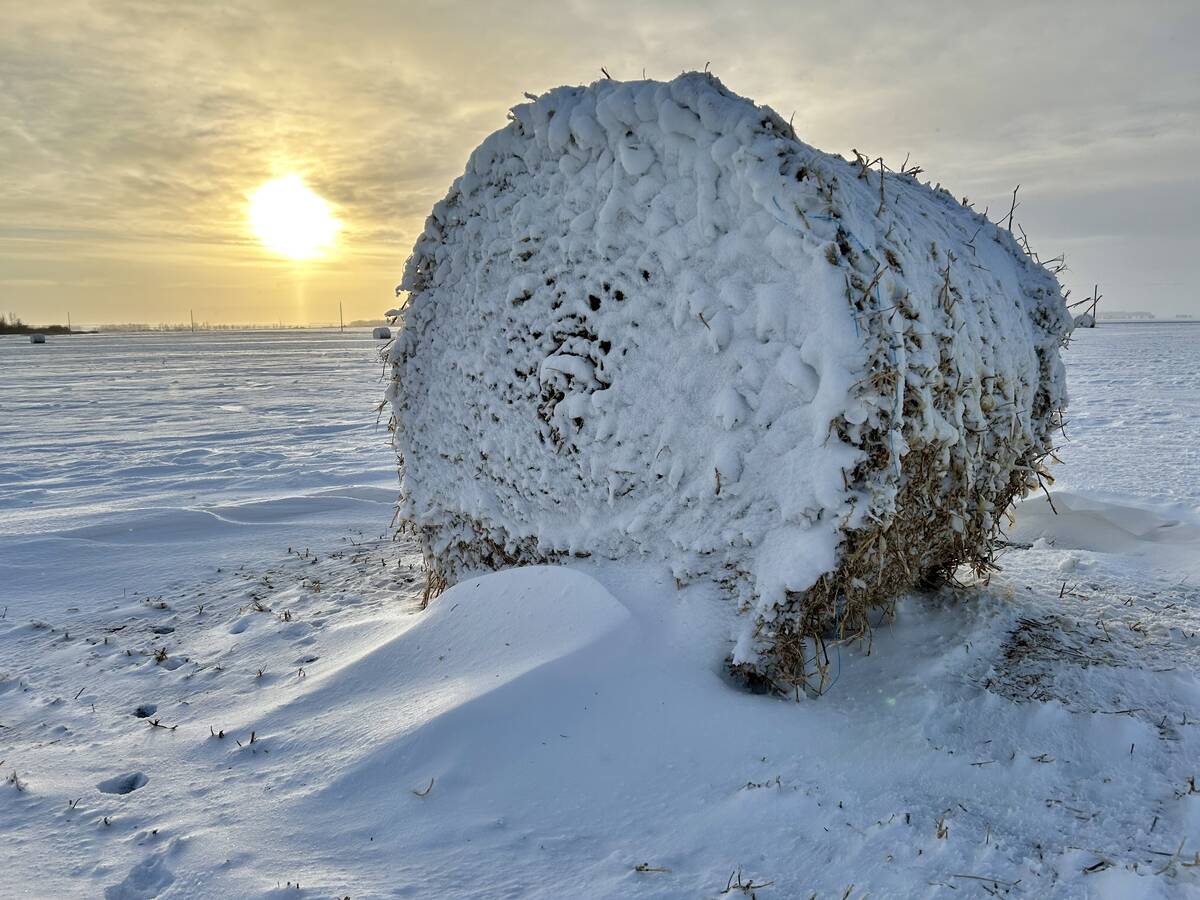
Prairie winter snowfall forecast 2025-2026
How much snow should farmers in Alberta and elsewhere on the Canadian Prairies expect for the rest of December 2025 and into January-February 2026?
Now, there are a couple of points or issues we should look at. The first thing that pops into my mind is that so far during this El Niño event we have not followed this pattern, at least for our region. We saw milder-than-average temperatures in October and unless something really dramatic happens during the second half of November, it is safe to say November will also come in above average.
So does this mean that this year is not going to follow the more typical strong El Niño pattern? Possibly. It could also mean that we will follow this pattern and with a warmer start, December will be really, really warm. We also have to remember that December temperatures are, well, cold. November’s mean monthly temperature is around -2 C in the south and -5 C in the central and northern regions. December’s is about -8 C in the south and around -12 C in the central and northern regions. Since above-average temperatures are usually about 3 C to 5 C above average, even a really warm December will still mean some cold temperatures. I don’t want any of you trading in your parkas just yet!
That said, now it’s the time to think winter, snow, the holiday season, and just what you should get that weather fanatic in your life. For those of you thinking about going all in for a full-blown weather station, my overall choice hasn’t changed from previous years. Your best bet is one of the Davis Instruments Vantage Pro2 or Vantage Vue units. Just like when you go to buy a truck or car, there is the basic unit which includes temperature, humidity, pressure, wind, and rainfall sensors. Then you can add on different features almost to your heart’s delight. Do you want to stick with the reliable wired station or go wireless? Worried about precise temperature and humidity readings? Then add in a fan aspirated radiation shield. Want to know UV and solar radiation? Then go with the Vantage Pro2 Plus station. Still want more? Feel free to add in soil moisture and leaf moisture sensors to create the ultimate station — something I’ve been wanting to do for a couple of years now, but just can’t seem to justify the extra cost.
These stations, if you look around, start around the $500 mark and can easily go as high as $1,500 for all the bells and whistles.
If these stations are a little above your budget, but you still want to get a complete station, then you can find some La Crosse weather stations or possibly a station by Oregon Scientific in the $250 to $500 range. I’ve also seen a new brand — at least new to me — called AcuRite, which is offering complete stations for $130 to $150. Personally, I haven’t used any of these companies’ full stations, but I do have a couple of basic La Crosse stations and they seem to work fairly well. Just remember, as with all things in life, you usually get what you pay for. There is a reason good weather stations are in the $500 to $1,000 range — reliability. Over the last 17 years I have used two Davis stations and the only reason it has been two is that I upgraded my first one. These stations just work.
In my next article, I think it’s time to look back once again at some of the big snowfall records and also look at the probabilities of seeing different amounts of snow. After all, even if we do have a very mild winter, we are still going to get snow. If there is a lot of mild air around this winter it could very well set the stage for a couple of big snowfalls, you never know.
Don’t forget, if you have questions or topics you would like me to cover please email me at: [email protected]. If you don’t hear back from me fairly quickly then please resend your message, sometimes my junk filter gets a little overzealous.





